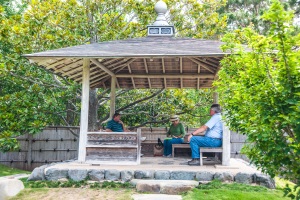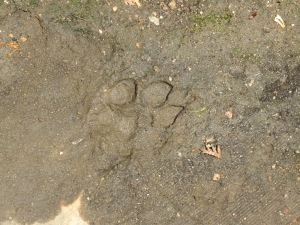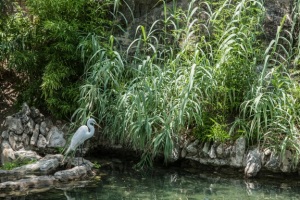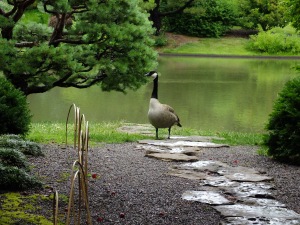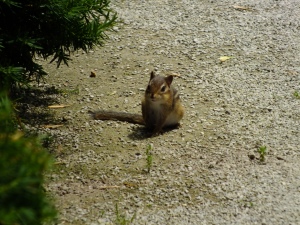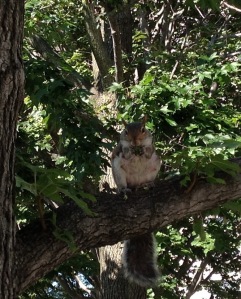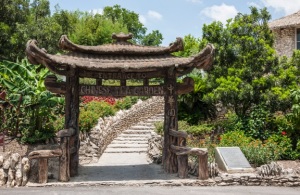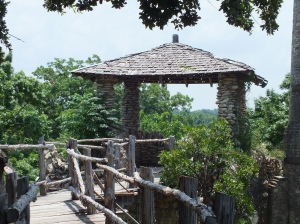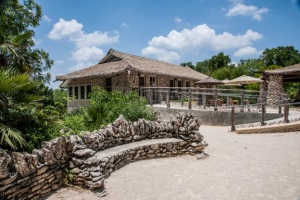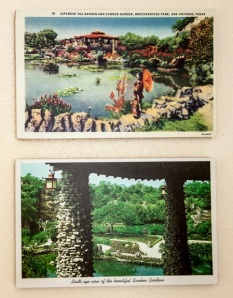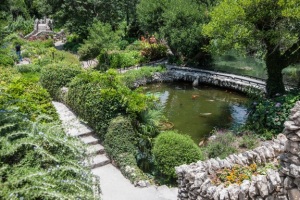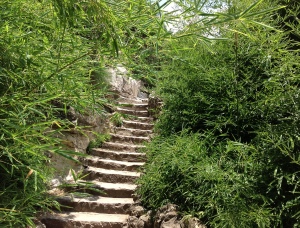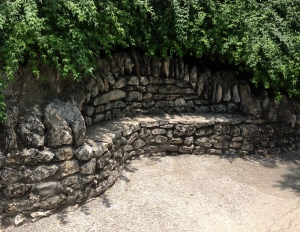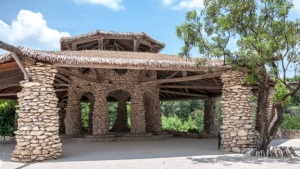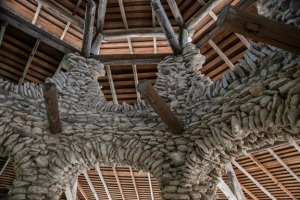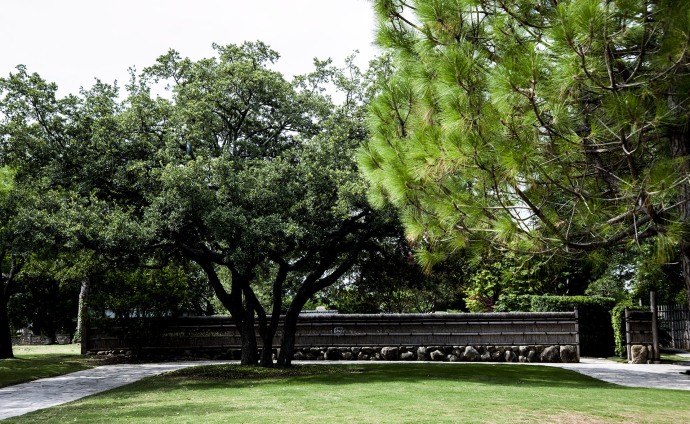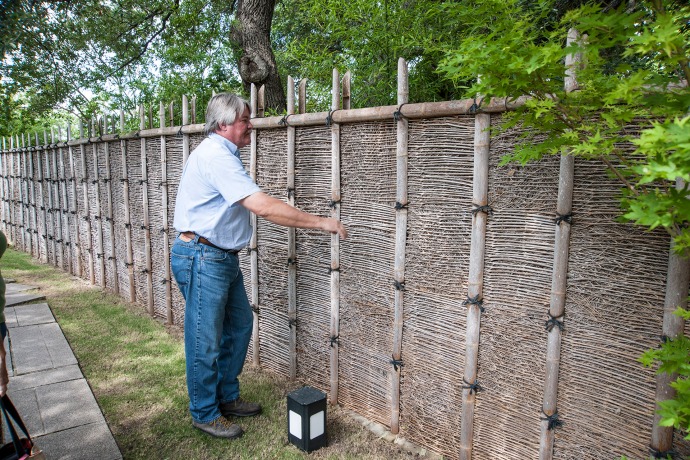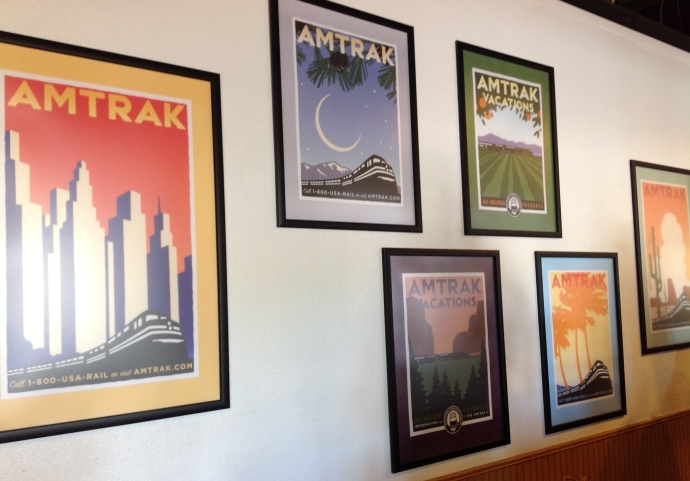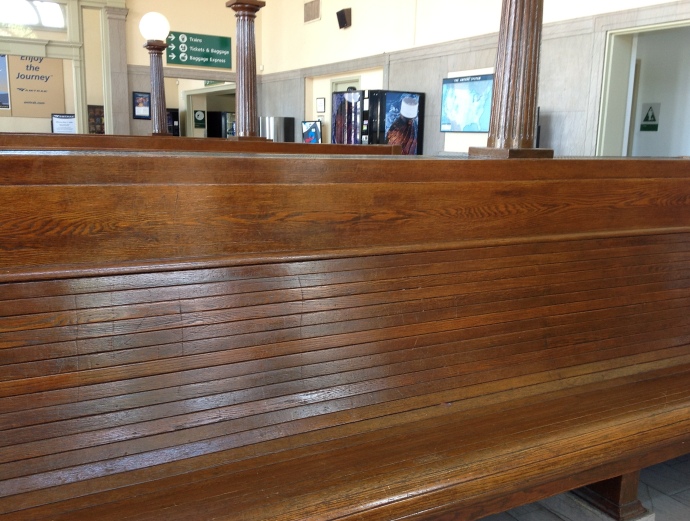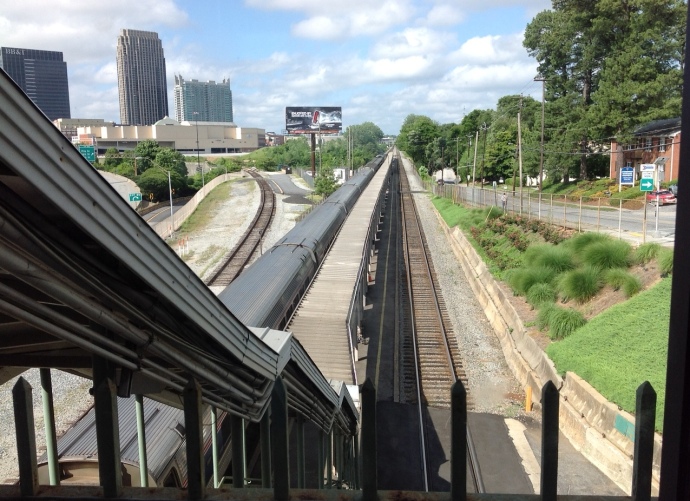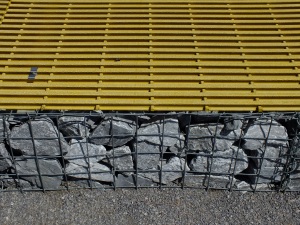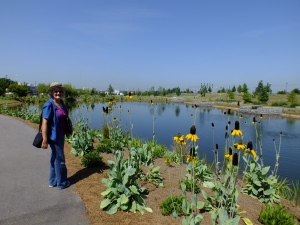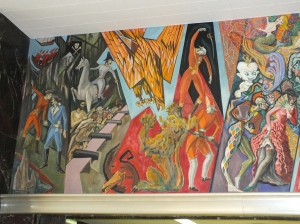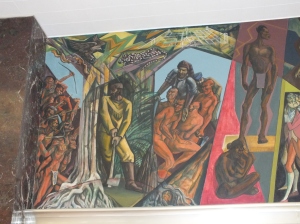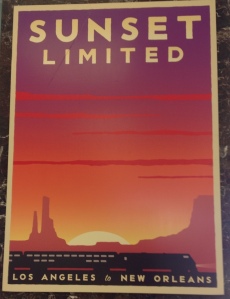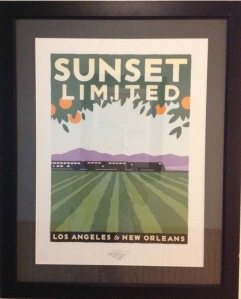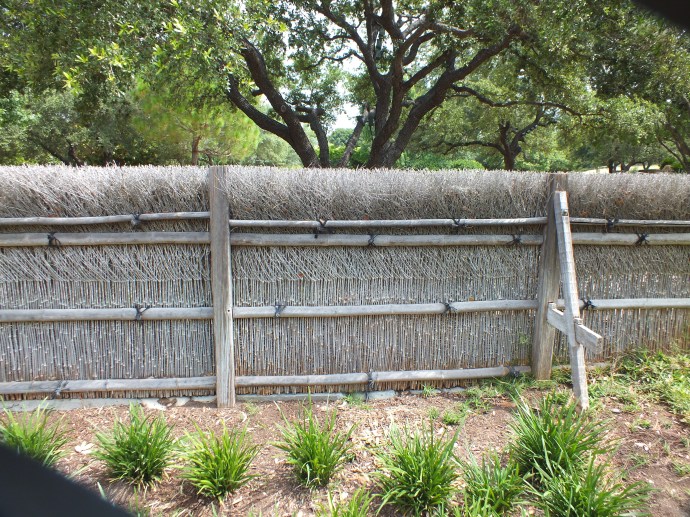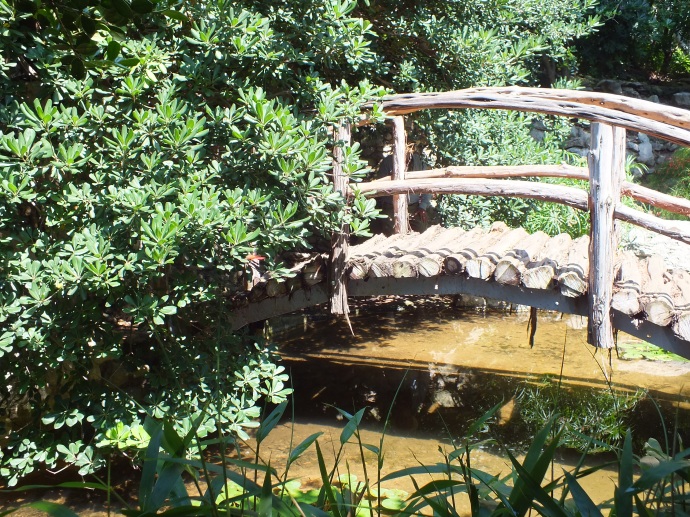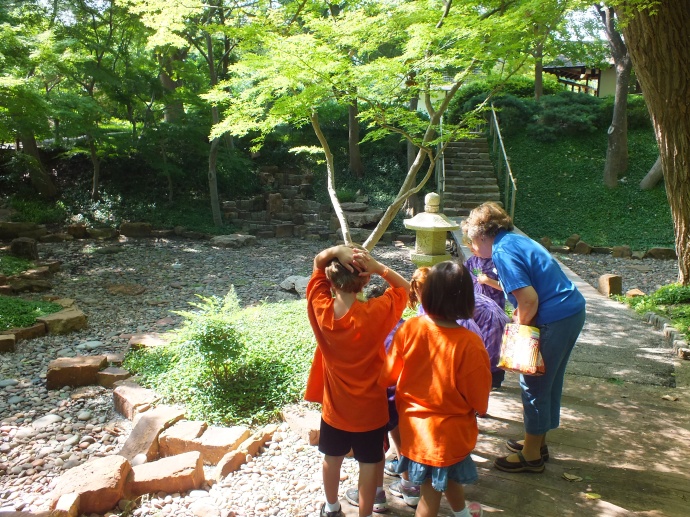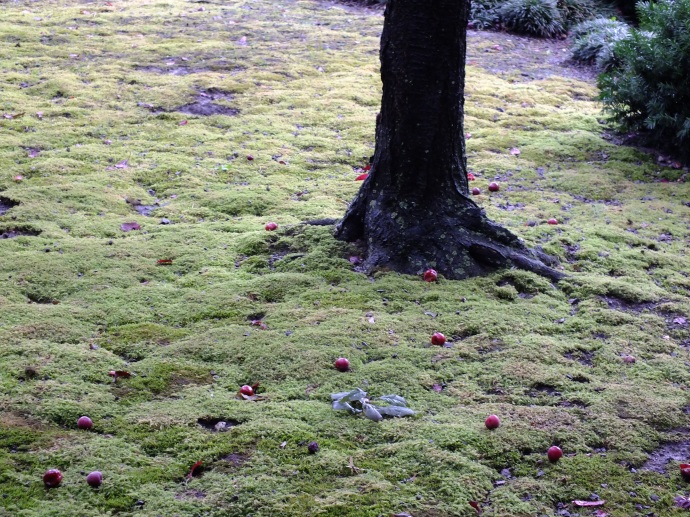Kumamoto en, the Japanese garden at San Antonio Botanical Garden, is a small polished gem set amid 33 acres of living museum. Enclosed by four bamboo walls, the garden presents a series of scenes reminiscent of famous gardens in Japan.
The garden was a gift of Sister City Kumamoto and first opened in 1989. Landscapers and craftsmen from Kumamoto, Kyoto, Tokyo and San Antonio participated in its design and construction. A complete restoration was accomplished in 2005.
“Upon entering the garden, you enter a place apart from the everyday world, a safe and peaceful haven where all anger, prejudice, and worldly problems are left at the gate,” writes Don Pylant in an article on the garden and its Sister City relationship with the City of San Antonio in http://japanesegardening.org/kumamotoen/
“Kumamoto en was designed to demonstrate the beauty of authentic Japanese gardening and introduce visitors to many elements used in Japanese Gardens. It is designed to be enjoyed one scene at a time, like a scroll painting, unrolling as you stroll through,” Pylant said.
Pylant was our guide through Kumamoto En. And what a perfect person to have as a guide to this lovely garden! Although Don currently serves as Park Operations Supervisor in a different area of the City of San Antonio Park Development Division, he spent nearly 24 years working in the San Antonio Botanical Garden. His love of Japanese gardens goes back further to his time in Dallas where he was Director of Horticulture at Dallas Civic Garden Center in Fair Park. He would spend time at the nearby Fort Worth Botanical Gardens’ beautiful Japanese garden, which inspired what would become a deep appreciation of Japanese gardening and a life-long commitment.
In 1980, Don moved from Dallas back to San Antonio to become part of the brand new San Antonio Botanical Gardens, where he participated in the development of gardens, growing facilities, educational programs, and construction of a botanical conservatory.
In 1985, the Japan America Society of San Antonio was formed to foster increased understanding and cooperation between the citizens of San Antonio and the citizens of Japan. Among early efforts was the construction of a Japanese garden in San Antonio.
In 1989, the City of San Antonio and sister city, Kumamoto City in Japan, jointly agreed to construct an authentic Japanese garden in San Antonio’s botanical garden. Don was involved in the planning and construction of this garden, working with architects in Kyoto and gardeners in Kumamoto, Kyoto and Tokyo. Don studied under master Japanese gardener Katsuoki Kawahara, a respected craftsman known for his work in temple gardens as well as commercial and residential gardens in Japan and around the world. Kawahara directed the team of professional gardeners selected from Kyoto, Tokyo and Kumamoto in the construction of Kumamoto En. After the construction, Don was responsible for the care and maintenance of the garden, and worked with gardeners from Japan in the garden.
In 2001, Mr. Kyoshi Yasui of Yasui-moku Company and the architect for Kumamoto En invited Don to come to Kyoto to train under master Japanese gardeners, architects, and bamboo craftsmen. He studied under Yasui, a respected architect nominated by the Emperor as a National Living Treasure of Japan. Don also studied under the master bamboo craftsmen at Otsuka Bamboo in Kyoto. The benefit of this training is evident in the four different bamboo walls surrounding Kumamoto en.
“All of this leads to a beautiful and authentic experience for our visitors,” Don said.
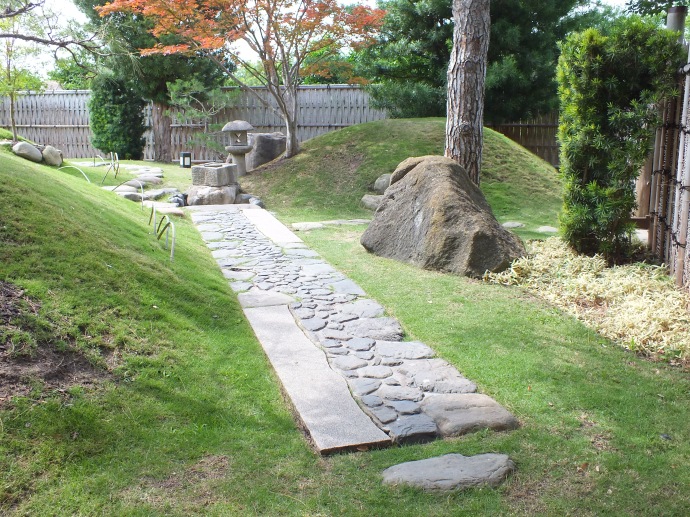
A suggestion of Mt. Aso-san, one of Kumamoto’s volcanoes, awaits the viewer to the right of the end of this pathway. An otsu-gaki or woven style bamboo fence is visible in the background along the back boundary of the garden.
Yasui asked Don to help sustain and manage the Kumamoto en. He also asked Don to take what he had learned and teach others about the benefits, methods, and enjoyment of Japanese Gardens. In addition to continued study and demonstrations in Japanese gardening, the Japanese Gardening Organization was created with the mission of spreading the benefits of Japanese gardening for individuals, groups, communities, and society. JGO provides educational resources to foster the exchange of culture, knowledge, appreciation and application of Japanese gardening, striving for the highest level of accurate information and resources for Japanese gardening. It continues to grow, with its associated forum accumulating over 11,000 posts from Japanese gardeners worldwide.
Today, Don Pylant works for the City of San Antonio developing and managing the resources for more than 6,000 acres of Natural Area Parks and Edwards Aquifer Protection preserves. He has continued to assist in the maintenance of Kumamoto En and is consultant for the Japanese Tea Gardens in Sunken Gardens, Brackenridge Park in San Antonio, Texas. He designs and constructs Japanese gardens by request.
The Japan America Society of San Antonio continues to support the garden with annual co-sponsorship of Kumamoto en Day providing Japanese cultural, art, crafts and gardening demonstrations, along with tours of of the garden.
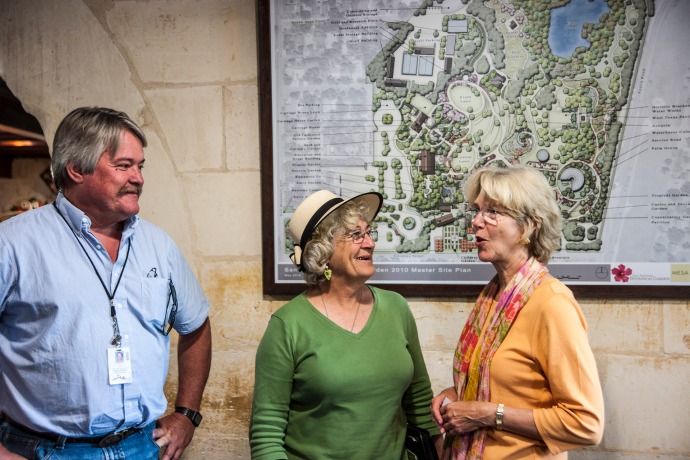
Don Pylant and K.T. Cannon-Eger listen to Candace Andrews explain the master plan for the botanical garden.
(photo by Bill F. Eger)
When we met at the carriage house entry to the botanical garden, Don introduced us to Candace Andrews, Director of Community Relations and Marketing for San Antonio Botanical Society, the non-profit organization chartered in 1980.
“The mission of this organization is to support the San Antonio Botanical Garden in its role of inspiring people to connect with the world of plants, and to understand the importance of plants in our lives,” Andrews said.
She spoke of the importance of volunteers to the garden, both in maintenance and as docents. The society operates the gift shop, proceeds of which support the garden. All rental proceeds and a portion of the restaurant income go toward the garden. She explained the San Antonio Botanical Garden is in the midst of master planning. Five year target is for the Society to take over from the city, privatizing the gardens.
Opened May 3, 1980 after nearly four years of construction, the San Antonio Botanical Garden is operated under the auspices of the City of San Antonio Department of Parks & Recreation. Bob Brackman has been executive director since 2006. Before accepting this position, he served for nearly 13 years as Vice President and Director of the Botanical Garden at the 55-acre Cheekwood Botanical Garden and Museum of Art in Nashville and prior to that for more than 12 years as the Director of Horticulture for the Dallas Arboretum and Botanical Garden.
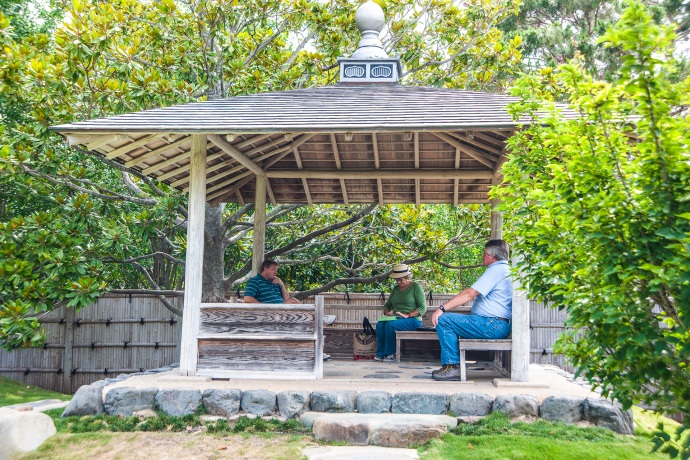
Bob Brackman, executive director, explains plans for the future of the San Antonio Botanical Garden to K.T. and Don in the azumaya completed in the 2005 renovation of Kumamoto En. K.T. is busy typing on her iPad. A kennin-ji style bamboo fence lines this side of the garden. More information on making this style is available here:
http://www.japanesegardening.org/reference/kenninji_fence.html
(photo by Bill F. Eger)
Brackman joined us at the azumaya in the garden. In his six-plus years with the San Antonio Botanical Garden, Brackman has led the completion of the Master Site Plan for the Garden. This new plan will be the framework for future development at this 38-acre botanical and educational facility. In addition, while working with the City and the Board of the Botanical Society, he has seen the approval of a new management agreement between the City and the Society which will eventually transfer the operational management of the Botanical Garden to the Society.
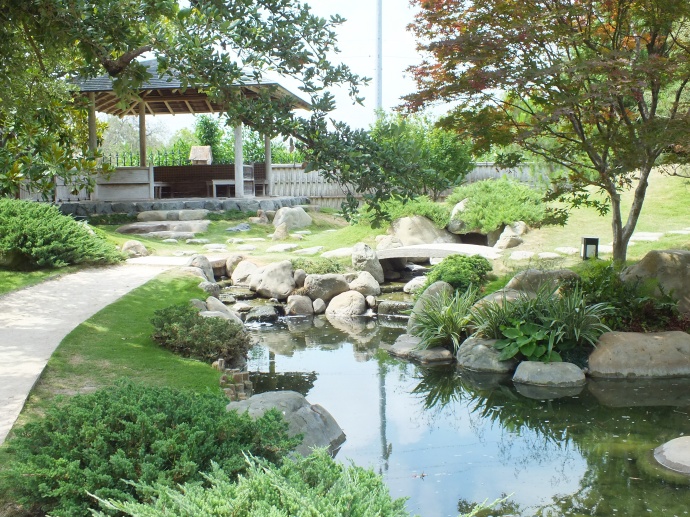
view across the central pond toward the azumaya in the back corner
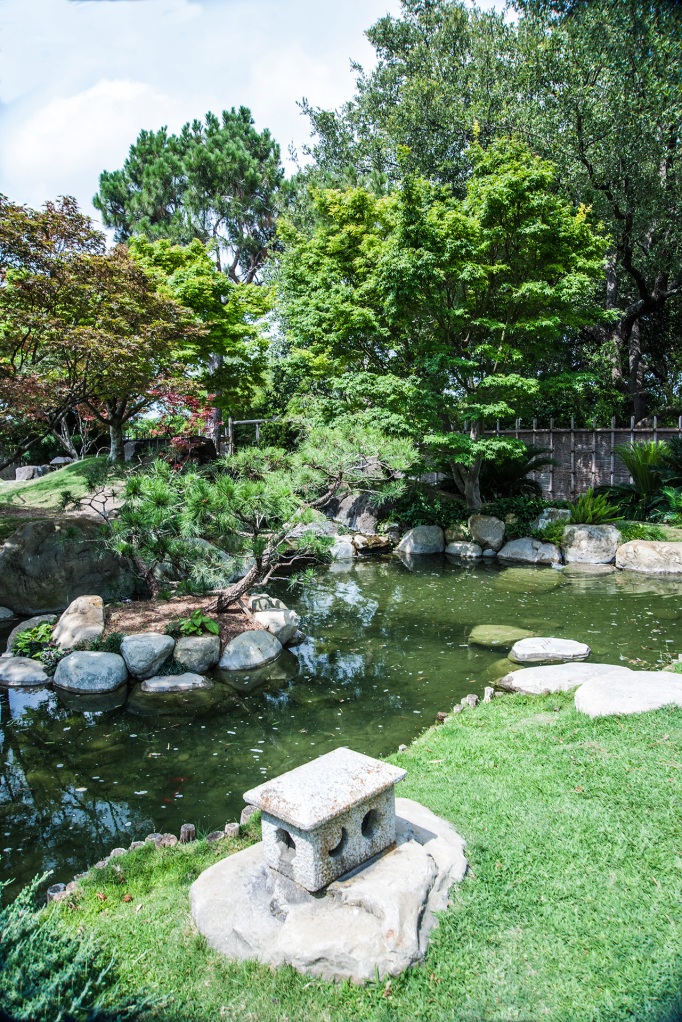
In the midst of an extended drought, San Antonio gardens have shut off many water features. One exception to the regulations is ponds in which fish are living. My particular favorite about this pond is the stepping stones that disappear into the water.
(photo by Bill F. Eger)
A little more history of the San Antonio Botanical Garden from its web site http://www.sabot.org
“Mrs. R. R. Witt and Mrs. Joseph Murphy conceived the idea of a Botanical Garden in San Antonio in the 1940s. Together with their friends and associates, they organized the San Antonio Garden Center. Their first major effort was the development and presentation of a master plan for a public botanical garden in the late 1960s. The recommended garden site became the former Brackenridge waterworks land which was being held by the city.
“Funding for ground work began in 1970, when voters approved $265,000 in bonds for the Garden. This money, along with a grant awarded five years later by the Ewing Halsell Foundation, other contributions from organizations and individuals, and a significant grant from the Economic Development Administration helped pay for the project. Ground-breaking ceremonies were held on July 21, 1976. The official opening was May 3, 1980.
“The entire site is now known as the San Antonio Botanical Center. This includes both the 33-acre San Antonio Botanical Garden and the adjacent San Antonio Garden Center. The Garden Center is operated under contract by the non-profit Garden Center, Incorporated, although the facility is still owned and maintained by the City of San Antonio.
“Charted in 1980, the San Antonio Botanical Society is the 501 (c) (3) non-profit support organization specifically established in support of the San Antonio Botanical Garden.”
Unless otherwise credited, photos in this blog are by K.T. Cannon-Eger. To see a full size image of any photo, click on it.
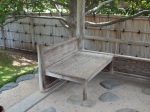
detail of bench in azumaya

detail of otsugaki
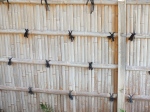
detail of kennin-ji
San Antonio — Kumamoto Sister City Relationship
There are two plaques commemorating the Sister City relationship between Kumamoto in Japan and San Antonio, Texas: one from the original garden dedication in 1989 and another from the renewal in 2005. Here is the English text from both.
1989
“In the spirit of this relationship, both cities hope for eternal peace and continuing friendship between our two cities and our countries as we work together to create this Japanese garden on San Antonio soil.
“It is out desire that this garden, as a symbol of our cordial relationship, will provide an introduction to one aspect of Japanese culture, and be cherished by the peoples of both cities in years to come.”
San Antonio City Council
Henry G. Cisneros, Mayor
2005
“To honor the spirit of friendship between the Sister Cities of San Antonio USA and Kumamoto Japan, we celebrate the renewal of the Kumamoto En Japanese Garden.
“The Japanese Garden was a gift to the people of our two cities and a desire to share in each other’s culture and spirit of friendship.
“The renewal of this authentic Japanese Garden is completed in cooperation with many citizens as well as the San Antonio City Council and the Kumamoto City Council. This renewal is a symbol of the continuing friendship between our two cities and the commitment that we will work together to strengthen our relationship and foster eternal peace.”
November 19, 2005
Hon. Phil Hardberger Hon. Seishi Kohyama
Mayor, City of San Antonio Mayor of City of Kumamoto
Underwriters
Kumamoto Gardeners Association
San Antonio International Affairs Foundation
Toyota Motor North America Inc.
Japan America Society of San Antonio
San Antonio Botanical Society
